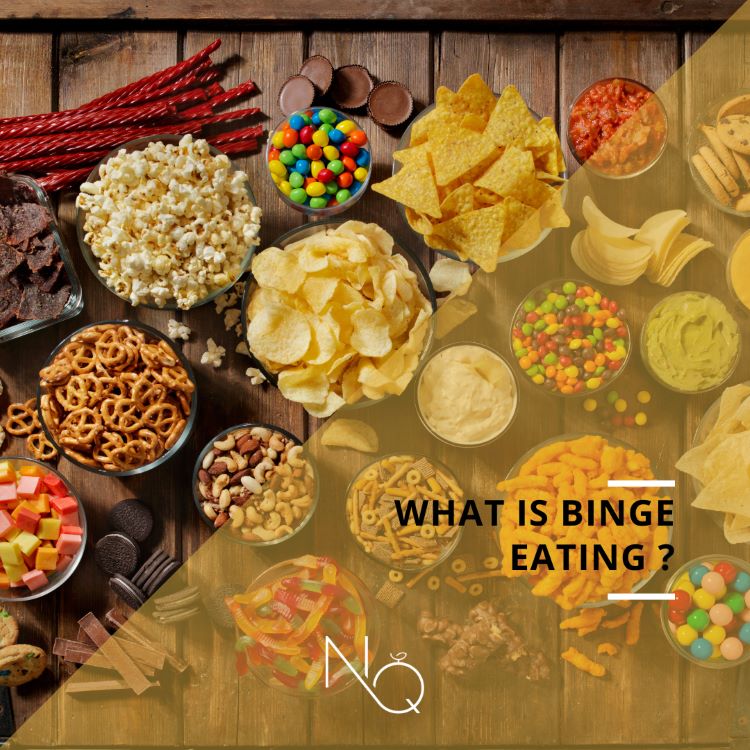What is the binge eating disorder?
Binge Eating Disorder is a serious, life-threatening, and treatable eating disorder characterized by repeated episodes of eating large amounts of food in a brief time, accompanied by discomfort, loss of control, anxiety, and guilt after the event. Binge eating disorder differs from bulimia nervosa as individuals do not use compensatory measures, such as purging, in response to the event.
How is binge eating disorder diagnosed?
- There are repeated episodes of binge eating. The person will know they have one event by the following two features. First, in a discrete period, for example, within 2 hours, they consume an amount of food that is certainly greater than what most people would eat if they were in similar conditions and at that time. Second, they feel to lose control over eating during the episode, that they cannot stop eating or control how much they eat.
- Binge eating episodes are associated with three or more of the following: 1) The person eats much faster than typical, 2) Eats until they feel uncomfortable, 3) Eats a large amount of food even though they are not hungry, 4) Eats alone because he/she is ashamed of this act, 5) They are overwhelmed by negative feelings about self, such as disgust, distress, and guilt, after the episode.
- The person feels discomfort concerning what is happening to them, meaning they do not like this situation.
- Binge eating occurs at least once a week for at least three months, on average.
- There are no compensatory behaviors as in bulimia nervosa and does not occur exclusively during bulimia nervosa or anorexia nervosa.
What risks does binge eating have on our health?
Binge eating has risks for our health. Obesity, social weight stigma, yo-yo weight, and stomach dysphoria are some of them.
How common is binge eating disorder?
There is not much data on the prevalence of binge eating disorder, so it is impossible to make conclusions. One study showed that 0.2%-3.5% of women and 0.9%-2.0% of men develop binge eating disorder. At the same time, only 28.4% of people with current binge eating disorder receive treatment. Binge eating usually starts in late adolescence or early adulthood, but it can also occur in younger kids or older adults. 60% of the people are women. 2/3 of people with the disorder are obese but can be any weight.
What signs and symptoms are warning signs of binge eating disorder?
Let's see the warning signs and symptoms of binge eating disorder. First, there may be behavioral changes. The person may withdraw from their usual associations or activities they love to do. They choose to eat alone and seem uncomfortable eating in public or in front of others. At the same time, there are also changes in diet. For example, we notice large amounts of food missing or find many empty food packages. A person who follows fad diets or diets frequently or tends to exclude entire groups from their diet may be experiencing a binge eating disorder. They may skip meals, eat small portions at regular meals, or have no organization of meals. Finally, they show great concern about body weight and shape or frequently check in the mirror for "flaws" in the body.
There is a possibility that we have noticed something of the above in a person close to us. First, we remember that each person has their say in their own life, and under no circumstances should we interfere improperly, even if we have the best intentions. We respect everyone's space, and if we feel like we should intervene somehow but don't know how we contact an expert to guide us. If we detect signs of binge eating in ourselves, we should consult a specialist. Binge eating disorder is the symptom, not the cause, of our problem. By facing the situation we can fix what concerns us and improve our relationship with nutrition and our body.




